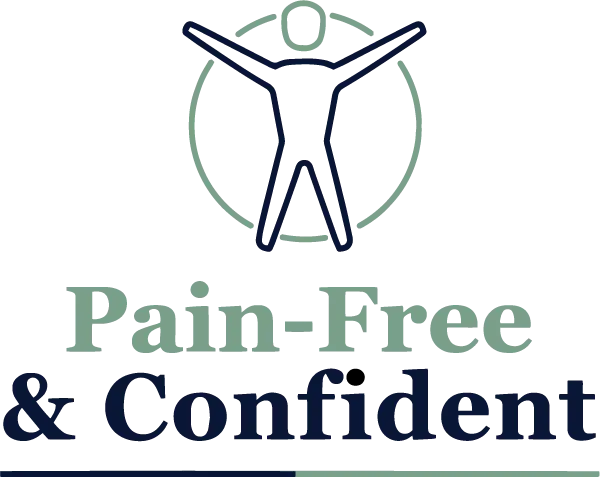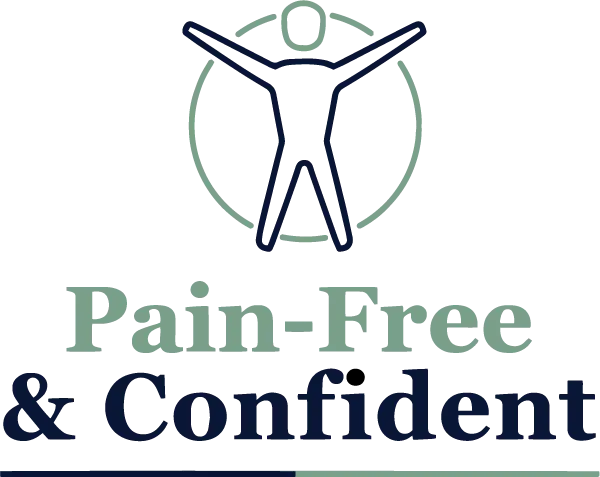Connecting Actions to Your Goals
Focus on Your Golfing Goals
To manage your pain and achieve your goals, it's important to keep your objectives in mind. For golfers, this means relating everything you do back to your golfing ambitions. Whether it’s an exercise, a diet change, or a relaxation technique, always think about how it helps you play golf pain-free and with confidence.
Visualise Your Goals
Visualisation is a powerful tool for achieving your goals. Spend a few minutes each day picturing yourself playing golf without pain. Imagine hitting the ball smoothly, walking the course comfortably, and enjoying your game. By visualising your goals, you reinforce your commitment to becoming pain-free and confident.
Align Your Activities
Make sure your daily activities support your golfing goals. If an activity doesn’t help you achieve your goal of playing golf pain-free, reconsider if it’s necessary. Here are some ways to align your activities:
Exercise: Choose exercises that strengthen your body for golf. Your choice needs to be governed by the other key practices but might include focusing on core strength, flexibility, and endurance.
Diet: Follow a nutrition plan that supports your health and reduces inflammation. This can help you feel better and play better.
Rest: Ensure you’re getting enough rest and recovery. Good sleep and relaxation techniques will support your body’s healing process.
Set Specific Goals
Setting specific, measurable goals can help you stay focused and motivated. Break down your main goal of playing golf pain-free into smaller, achievable steps. For example:
Short-Term Goals: These could be daily or weekly goals, like practicing a pain-free swing or doing a specific set of exercises. This is about regaining the cliff top.
Medium-Term Goals: These might include playing a full round of golf without pain or reducing your pain score by a certain amount over a month.
Long-Term Goals: These are your ultimate goals, such as playing golf regularly without pain and feeling confident on the course. This is all about getting right back from the edge of the Cliff of PainTM.
Keep a Goal Journal
Keeping a journal can help you stay on track with your goals. Write down your daily activities and how they relate to your golfing ambitions. Note any progress you make and any setbacks you encounter. This can help you see patterns and make adjustments as needed.
Get Feedback
Feedback from others can be invaluable in achieving your goals. Talk to your coach, physical therapist, or doctor about your progress. They can provide tips and suggestions to help you stay on track. They might also notice things you can improve that you might not see yourself.
Stay Motivated
Staying motivated is key to achieving your goals. Here are some tips to keep your motivation high:
Tools to Help You Optimise
To make optimization easier, here are some tools you can use:
Celebrate Small Wins: Every step forward, no matter how small, is progress. Celebrate these achievements to stay motivated.
Stay Positive: Focus on what you can do rather than what you can’t. A positive mindset can help you overcome challenges.
Surround Yourself with Support: Spend time with people who support your goals and encourage you. Their positive energy can help you stay motivated.
Putting It All Together
Relating everything you do to your golfing goals helps you stay focused and motivated. By aligning your activities, setting specific goals, and staying motivated, you can achieve your goal of playing golf pain-free and with confidence
Tools to Help You Relate
To make relating everything to your goals easier, here are some tools you can use:
Goal Journal: Use a journal to write down your goals, daily activities, and progress.
Visualisation Apps: There are apps available that can guide you through visualization exercises.
Feedback Sessions: Schedule regular feedback sessions with your coach or therapist to discuss your progress and make adjustments.
Tips for Success
- Be Consistent: Relate your actions to your goals every day. Consistency is key to achieving long-term success.
- Adjust as Needed: Be flexible and ready to adjust your plans if something isn’t working.
- Stay Committed: Stay committed to your goals, even when it’s challenging. Remember why you started and keep pushing forward.
Sharing Your Progress
When you visit your doctor or therapist, share your goal journal with them. This can help them understand your progress and provide tailored advice. They can also help you set new goals and make adjustments to your plan.
Why Relating Your Actions Matters
Relating your actions to your goals is important because it keeps you focused and motivated. By connecting everything you do to your golfing ambitions, you ensure that your efforts are aligned with your desired outcome. This helps you stay on track and make meaningful progress toward becoming pain-free and confident.
Stay Positive
Relating everything to your goals can sometimes be challenging, especially when you face setbacks. But remember, every small step counts. Celebrate the small victories, like a pain-free practice session or a day with less discomfort. Each step forward is progress.
Conclusion
Relating your actions to your goals is one of the 6 key practices for overcoming persistent lower back pain. By visualizing your goals, aligning your activities, setting specific goals, keeping a journal, getting feedback, and staying motivated, you can take control of your pain. This will help you play golf and enjoy other activities with confidence and less pain. Keep at it, and remember that each small step brings you closer to a pain-free life.

Gavin Routledge
Relate
Connecting Actions to Your Goals
Focus on Your Golfing Goals
To manage your pain and achieve your goals, it's important to keep your objectives in mind. For golfers, this means relating everything you do back to your golfing ambitions. Whether it’s an exercise, a diet change, or a relaxation technique, always think about how it helps you play golf pain-free and with confidence.
Visualise Your Goals
Visualisation is a powerful tool for achieving your goals. Spend a few minutes each day picturing yourself playing golf without pain. Imagine hitting the ball smoothly, walking the course comfortably, and enjoying your game. By visualising your goals, you reinforce your commitment to becoming pain-free and confident.
Align Your Activities
Make sure your daily activities support your golfing goals. If an activity doesn’t help you achieve your goal of playing golf pain-free, reconsider if it’s necessary. Here are some ways to align your activities:
Exercise: Choose exercises that strengthen your body for golf. Your choice needs to be governed by the other key practices but might include focusing on core strength, flexibility, and endurance.
Diet: Follow a nutrition plan that supports your health and reduces inflammation. This can help you feel better and play better.
Rest: Ensure you’re getting enough rest and recovery. Good sleep and relaxation techniques will support your body’s healing process.
Set Specific Goals
Setting specific, measurable goals can help you stay focused and motivated. Break down your main goal of playing golf pain-free into smaller, achievable steps. For example:
Short-Term Goals: These could be daily or weekly goals, like practicing a pain-free swing or doing a specific set of exercises. This is about regaining the cliff top.
Medium-Term Goals: These might include playing a full round of golf without pain or reducing your pain score by a certain amount over a month.
Long-Term Goals: These are your ultimate goals, such as playing golf regularly without pain and feeling confident on the course. This is all about getting right back from the edge of the Cliff of PainTM.
Keep a Goal Journal
Keeping a journal can help you stay on track with your goals. Write down your daily activities and how they relate to your golfing ambitions. Note any progress you make and any setbacks you encounter. This can help you see patterns and make adjustments as needed.
Get Feedback
Feedback from others can be invaluable in achieving your goals. Talk to your coach, physical therapist, or doctor about your progress. They can provide tips and suggestions to help you stay on track. They might also notice things you can improve that you might not see yourself.
Stay Motivated
Staying motivated is key to achieving your goals. Here are some tips to keep your motivation high:
Tools to Help You Optimise
To make optimization easier, here are some tools you can use:
Celebrate Small Wins: Every step forward, no matter how small, is progress. Celebrate these achievements to stay motivated.
Stay Positive: Focus on what you can do rather than what you can’t. A positive mindset can help you overcome challenges.
Surround Yourself with Support: Spend time with people who support your goals and encourage you. Their positive energy can help you stay motivated.
Putting It All Together
Relating everything you do to your golfing goals helps you stay focused and motivated. By aligning your activities, setting specific goals, and staying motivated, you can achieve your goal of playing golf pain-free and with confidence
Tools to Help You Relate
To make relating everything to your goals easier, here are some tools you can use:
Goal Journal: Use a journal to write down your goals, daily activities, and progress.
Visualisation Apps: There are apps available that can guide you through visualization exercises.
Feedback Sessions: Schedule regular feedback sessions with your coach or therapist to discuss your progress and make adjustments.
Tips for Success
- Be Consistent: Relate your actions to your goals every day. Consistency is key to achieving long-term success.
- Adjust as Needed: Be flexible and ready to adjust your plans if something isn’t working.
- Stay Committed: Stay committed to your goals, even when it’s challenging. Remember why you started and keep pushing forward.
Sharing Your Progress
When you visit your doctor or therapist, share your goal journal with them. This can help them understand your progress and provide tailored advice. They can also help you set new goals and make adjustments to your plan.
Why Relating Your Actions Matters
Relating your actions to your goals is important because it keeps you focused and motivated. By connecting everything you do to your golfing ambitions, you ensure that your efforts are aligned with your desired outcome. This helps you stay on track and make meaningful progress toward becoming pain-free and confident.
Stay Positive
Relating everything to your goals can sometimes be challenging, especially when you face setbacks. But remember, every small step counts. Celebrate the small victories, like a pain-free practice session or a day with less discomfort. Each step forward is progress.
Conclusion
Relating your actions to your goals is one of the 6 key practices for overcoming persistent lower back pain. By visualizing your goals, aligning your activities, setting specific goals, keeping a journal, getting feedback, and staying motivated, you can take control of your pain. This will help you play golf and enjoy other activities with confidence and less pain. Keep at it, and remember that each small step brings you closer to a pain-free life.

Gavin Routledge
Our Mission
Our mission is to empower the world’s golfers to build a strong pain-free lower back they can have confidence in, and to optimise their health so that they can look forward to golfing into their 90s.
CONTACT INFORMATION
10 Atholl Place Edinburgh EH3 8HP


